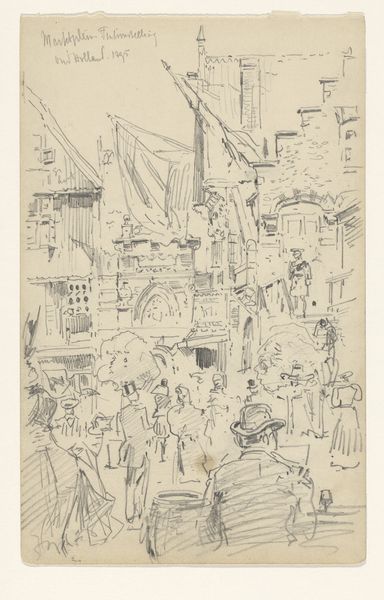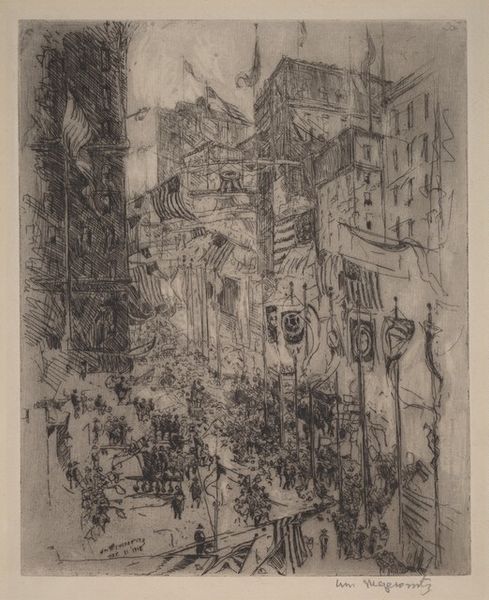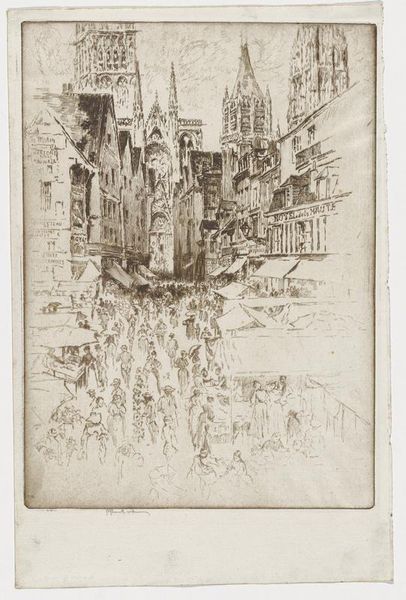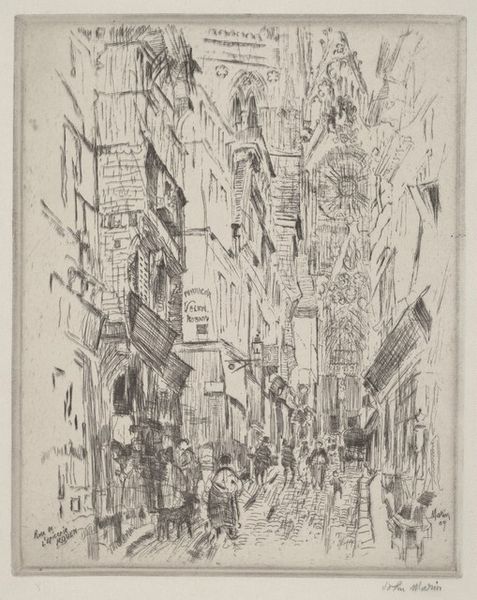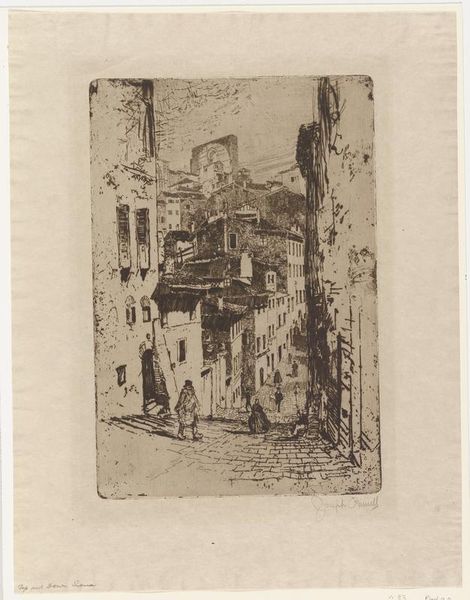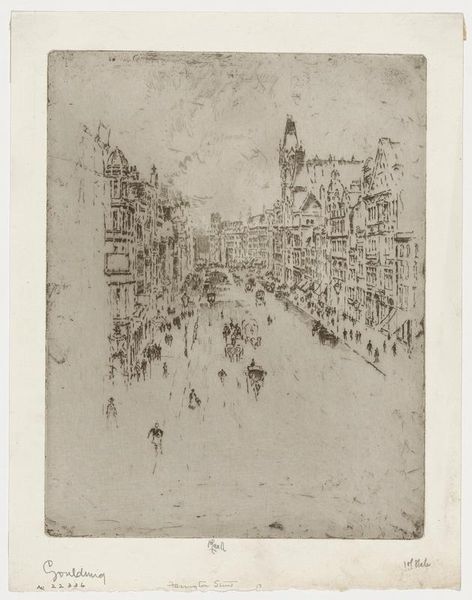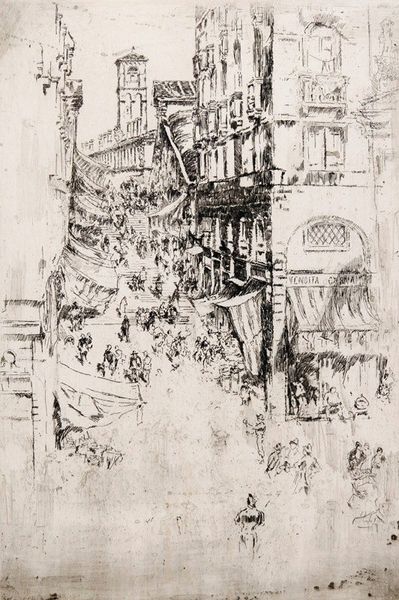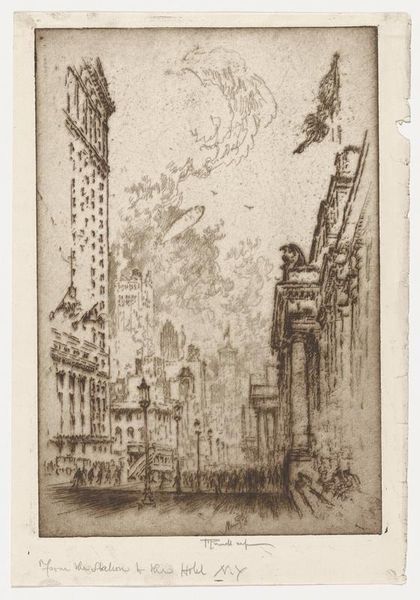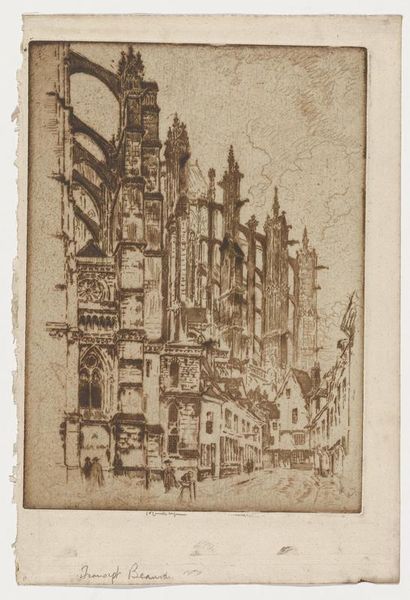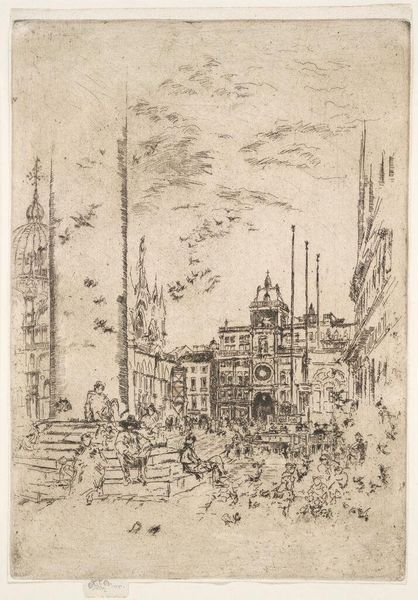
Dimensions: 12 3/8 x 9 1/16 in. (31.43 x 23.02 cm) (plate)16 3/8 x 10 1/2 in. (41.59 x 26.67 cm) (sheet)
Copyright: No Copyright - United States
Editor: Here we have Joseph Pennell's etching, "Chinatown," created in 1912. It gives a real sense of a bustling city street, doesn’t it? It seems to capture a frenetic energy. What stands out to you when you look at this piece? Curator: Well, considering Pennell’s chosen medium – etching – we must examine how this method shaped both the visual representation and social commentary embedded within. The gritty texture of the etching is paramount. Consider the material cost of copper plates, acids used to bite the image, inks pressed into the paper, and the labor required at each stage. Pennell’s decision elevates printmaking – often viewed as reproductive or commercial – into the realm of "fine art," a commentary, in itself, of the social hierarchy that exists within artistic production. Editor: So you are thinking about the hierarchy? How does this etching talk about that through what is shown? Curator: I am focusing on the production methods rather than what is represented. The choice of subject matter and the artistic method create tension, the depiction of Chinatown - a space already laden with cultural baggage related to immigration and labor – rendered in a process demanding both craft and technical skill forces us to re-evaluate what art is for whom and how it is produced and distributed in relation to place and time. The material circumstances cannot be ignored. Editor: I see. It is like he is dignifying an everyday scene through meticulous workmanship. It really elevates both the subject and the medium itself. Curator: Exactly! The inherent material value and associated labor challenges traditional art and class boundaries by questioning aesthetic assumptions around who deserves to be seen, made visible through complex print production, challenging cultural narratives around class and art history. Editor: It makes you wonder, what labor went unacknowledged? I am going to have to rethink a lot! Thank you. Curator: Indeed. Considering these choices expands the way one appreciates the piece. There’s always more to consider beyond the initial glance.
Comments
No comments
Be the first to comment and join the conversation on the ultimate creative platform.

